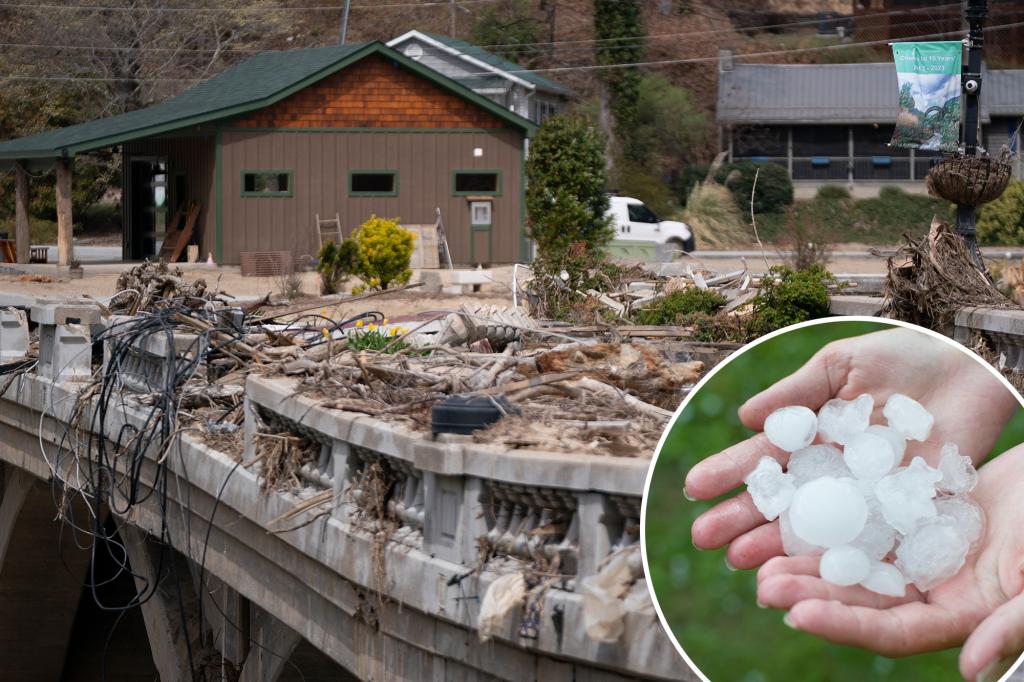Unraveling the Storm: Hail and Flash Flood Risks Threaten North Carolina
North Carolina faces a dual weather crisis as severe hail and flash flood warnings follow Hurricane Helene’s devastation. Meteorologists warn that the state, still reeling from Helene’s impact, could experience damaging hailstones and rapid flooding this week. Residents are urged to prepare for power outages, property damage, and hazardous travel conditions as the new storm system moves inland.
Meteorological Conditions Fueling the Threat
The National Weather Service (NWS) has issued a severe thunderstorm watch for 32 counties, with hail up to 2 inches in diameter predicted. Meanwhile, the Coastal Plain region remains under a flash flood warning due to saturated ground from Helene’s torrential rains. The collision of warm, moist air from the Atlantic with a cold front creates ideal conditions for extreme weather.
“This is a textbook setup for supercell thunderstorms capable of producing large hail,” explains Dr. Rebecca Morrow, a climatologist at Duke University. “When you combine that with already swollen rivers and compromised drainage systems, you get a perfect recipe for flash flooding.”
Communities Still Vulnerable from Hurricane Damage
Many neighborhoods across the Piedmont region continue cleaning up from Helene’s destruction, making them particularly susceptible to new weather threats. Emergency management officials report:
- Over 12,000 homes still without power from previous storms
- 37 secondary roads remain closed due to washouts
- Flood control systems operating at 60% capacity in hardest-hit areas
“We’re seeing families trying to make temporary repairs just as another storm rolls in,” says Mark Henderson of NC Emergency Management. “This creates extremely dangerous situations where compromised structures could fail under hail impacts or additional rainfall.”
Projected Economic Impact and Safety Measures
The Insurance Information Institute estimates potential hail damage claims could exceed $80 million statewide, with agricultural losses adding another $20 million. Farmers report vulnerable crops including tobacco, soybeans, and apples at critical growth stages.
Local governments have implemented several protective measures:
- Activated emergency operations centers in 15 counties
- Pre-positioned swift water rescue teams in flood-prone areas
- Opened 12 additional shelters with capacity for 3,000 residents
“We learned hard lessons from Hurricane Matthew in 2016,” notes Governor Roy Cooper. “This time we’re deploying resources earlier and coordinating more closely with federal partners.”
Long-Term Climate Patterns and Future Risks
Climate scientists point to concerning trends in North Carolina’s weather patterns. Data from NOAA shows:
- A 27% increase in severe hail events since 2000
- Flash flood frequency up 40% over the past decade
- Average rainfall intensity during storms growing by 15%
While some residents remain skeptical about climate change connections, insurance companies are taking action. Several major providers have stopped writing new policies in coastal counties, and deductibles for wind/hail damage have increased statewide.
Preparing for the Storm’s Aftermath
As the storm system approaches, officials recommend:
- Documenting property conditions with photos/video
- Clearing storm drains and securing loose outdoor items
- Creating digital copies of important documents
- Maintaining at least three days of emergency supplies
“The time for preparation is now, not when the hail starts falling,” warns National Weather Service meteorologist Alan Waters. “We’re particularly concerned about areas that received 8+ inches of rain last week – the ground simply can’t absorb much more.”
Looking Ahead: North Carolina’s Resilience Challenge
The coming days will test North Carolina’s emergency response systems and community resilience. While short-term forecasts look grim, long-term solutions require infrastructure upgrades and climate adaptation planning. The state legislature currently debates a $2.3 billion flood mitigation package that could help vulnerable communities.
For real-time updates, residents should monitor the National Weather Service and local emergency management channels. As climate volatility increases, experts agree that preparedness must become a way of life for North Carolinians facing these growing weather extremes.
See more Your Daily Weather



